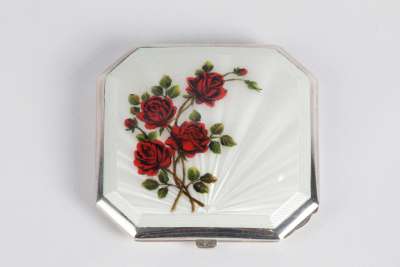A Porcelain scent bottle formed as an elephant's head with colourful head dress and a gold tassel on his forehead. Registration mark probably for Worcester. Silver screw-on lid with embossed Indian-style decoration assayed in Birmingham by Saunders and Shepherd 1885.
Condition Report: Very Good with wear consistent with age and use.
Dimensions: Weight 35gm, Length 7cm, Width 4cm, Height 4cm















